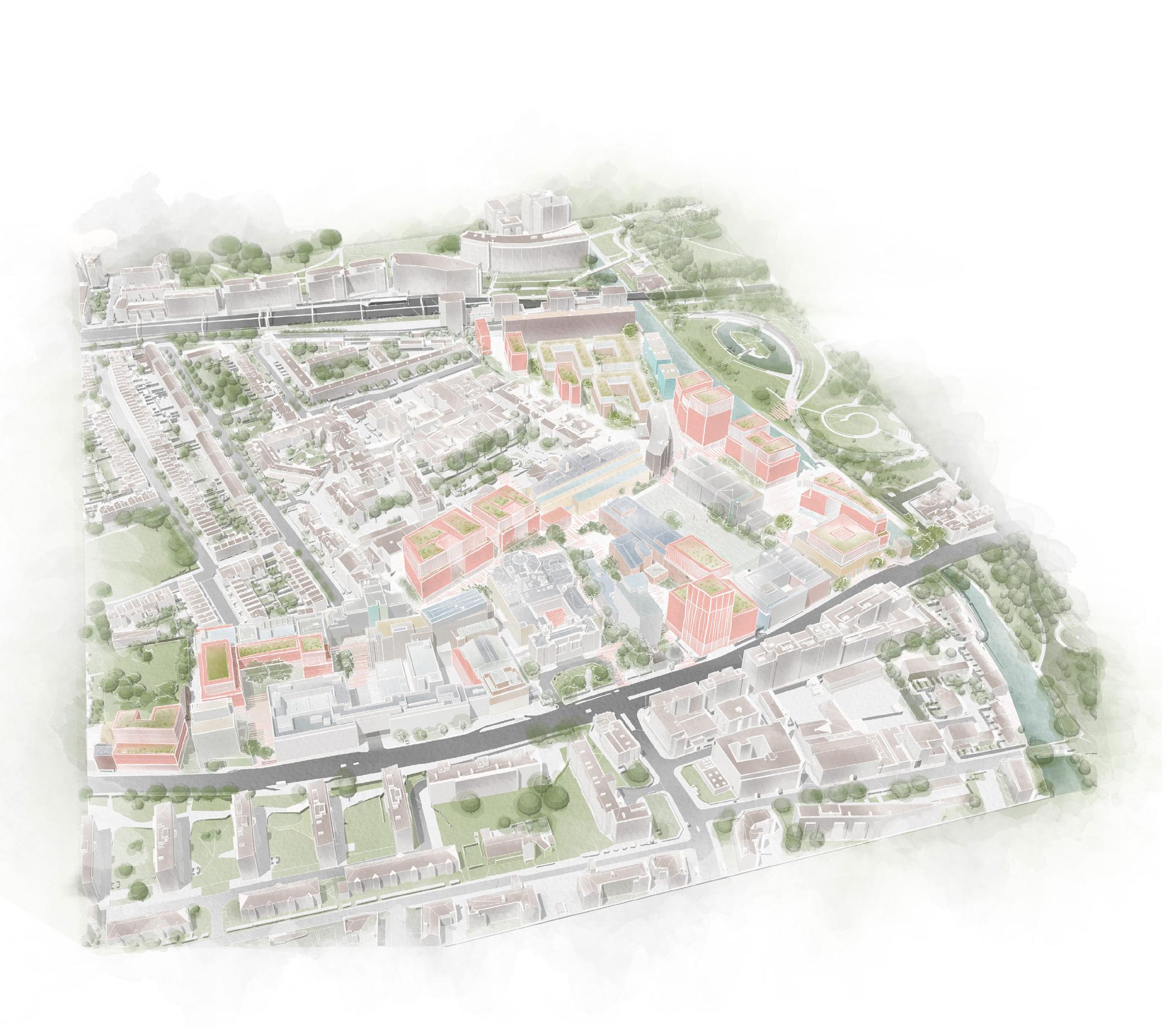
1 minute read
Queen Mary University of London Mile End, London
Project Supplementary Planning Document
CLIENT
QUEEN MARY UNIVERSITY OF LONDON
Haworth Tompkins worked with Queen Mary University of London (QMUL) on a Supplementary Planning Document for their Mile End Campus. QMUL is one of the UK’s leading research-focused higher education institutions, and also one of the largest University of London Colleges. Within this, the Mile End Campus is the largest and busiest of QMUL’s campuses, primarily serving the faculties of Science and Engineering, and Humanities and Social Sciences. Over 70% of students come from within 25km of the main campus, and it therefore serves a strategic role within the local higher education sector in the East End of London. Until now the campus has developed in a largely ad-hoc way, and it was our aim to ensure that future development is considered in a more comprehensive manner in order to enhance the quality of the estate. In order to do this, the Masterplan objectives include strengthening community, protecting and enhancing heritage assets, improving public realm and ecology, strategic and coherent growth, improved permeability and sustainable transport infrastructure. These strands are embedded within suggestions for core development opportunities, and in the key design principles that should be considered in proposals for individual sites. The opportunities are focused within five different zones of the campus, each with its own set of unique circumstances. The case studies explore the most significant opportunity sites but do not detract potential for future development in remaining areas. dprinciples that should be followed, a case study option is provided for each development site indicating how the principles could be applied. Opportunities for the retrofit of existing buildings are also considered.











